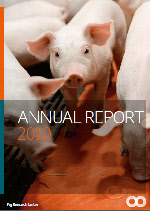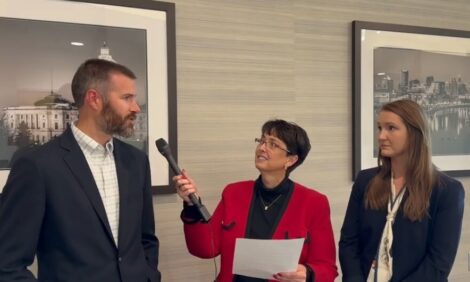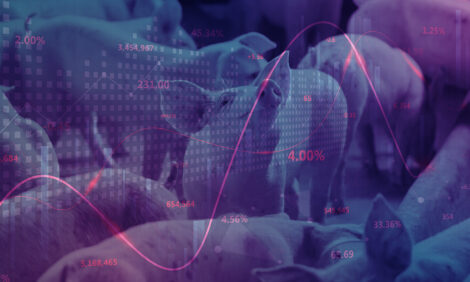



Danish Pig Research Centre: Annual Report 2010: Biogas and Slurry Separation
The 2010 annual report from the Danish Pig Research Centre describes the costs and benefits of biogas production and pig manure separation.
Biogas
Break-even analyses of biogas systems based on pure livestock manure revealed that the price of biogas produced on electricity should be raised from approximately DKK0.76 to DKK1.10 per kWh.
Biogas and Slurry
In Denmark, biogas systems receive slurry from livestock farmers, and they also collect the degassed biomass. Dry matter content of the slurry contributes slightly, but positively to the gas yield.
To obtain a sufficiently high gas yield, a range of purchased energy compounds, sludge and industrial waste are used. As a result, gas yield increases significantly compared to using slurry only.
However, the consequence of comprehensive extensions of the biogas sector based on livestock manure in Denmark would be that in particular pig slurry would need to be concentrated as biogas facilities based on 100 per cent livestock manure will otherwise not be profitable.
Slurry Separation
This may be solved through concentration of the dry matter content of slurry. In 2010, around two per cent of all slurry was separated in Denmark.
Costs of slurry separation
There are many manufacturers of slurry separation systems. A system for a farm often costs around DKK1 million, while unit costs can be kept at about DKK6 per tonne.
On a farm with 500 livestock units (LU), slurry separation will cost about DKK18 per tonne of slurry. Mobile decanters are now seen to be gaining ground.
They have a capacity of up to 100 tonnes per hour versus the capacity of farm systems of about six tonnes per hour. This may reduce the cost per tonne slurry slightly, particularly if the capacity is well utilised.
Slurry Separation Products
During slurry separation, the fibre fraction obtained may contain up to 30 per cent of slurry nitrogen but that is only 10 per cent of the slurry’s volume. For pig slurry, 75kg artificial fertiliser nitrogen (Nmin) is required to replace 100kg Npig. 100kg Npig in the liquid fraction can be replaced by approximately 88kg N from artificial fertiliser, while only 45kg Nmin is required to replace 100kg Nfibre.
Advantages at Sector Level
As a result, the maximum limit for liquid fractions is 120kg nitrogen per livestock unit (N/LU), corresponding to 1.68LU per hectare. The overall harmony area remains the same, though, as the environmental impact of the fibre fraction is correspondingly higher.
When separating slurry, around 90 per cent of the original slurry volume can be spread on about 60 per cent of the harmony area of a pig farm. Assuming that the remaining 40 per cent of the harmony area is located away from the farm, the overall costs for spreading of the liquid fraction and the fibre fraction will be somewhat lower than for spreading of slurry.
Transport of one tonne slurry one kilometre costs about DKK1. If slurry separation costs DKK18 per tonne, the remaining 40 per cent of the harmony area of a pig farm must be located more than 55km away in order for slurry separation to be economically more attractive than regular slurry handling.
For the individual farm, however, the break-even distance may be somewhat less, depending on slurry agreement etc. For most pig producers, slurry separation will increase costs for slurry handling.
Break-Even Analysis
The break-even analysis, therefore, assumes that the biogas systems pay the costs of slurry separation.
About 17 per cent of the biomass in the system must originate from fibre fractions, corresponding to 67 per cent of the livestock manure led to the biogas system having been separated on-farm.
The figure below illustrates the economy in biogas systems of three different sizes at varying electricity prices and a natural gas price of DKK1.65 per cubic metre of nitrogen, corresponding to the current gas price.

November 2011






